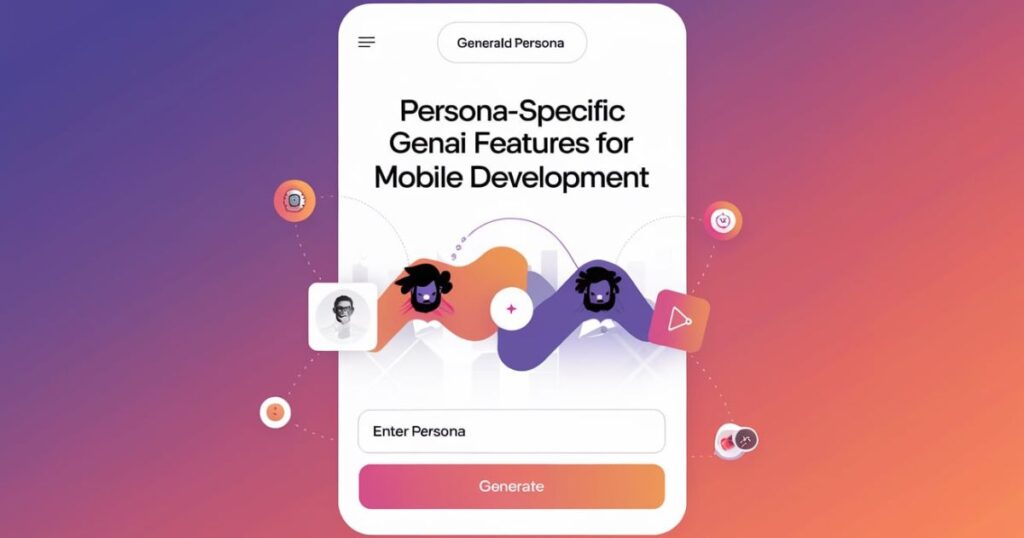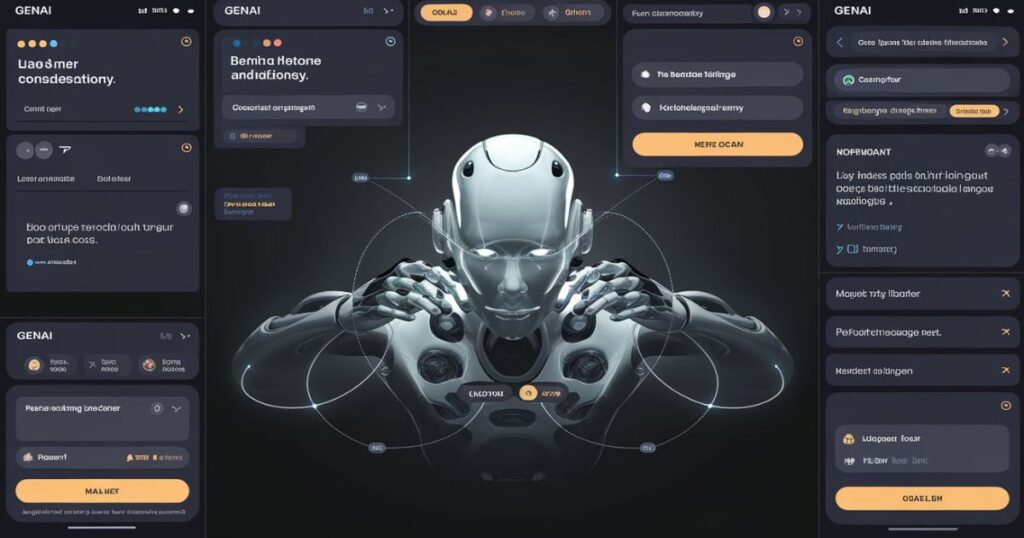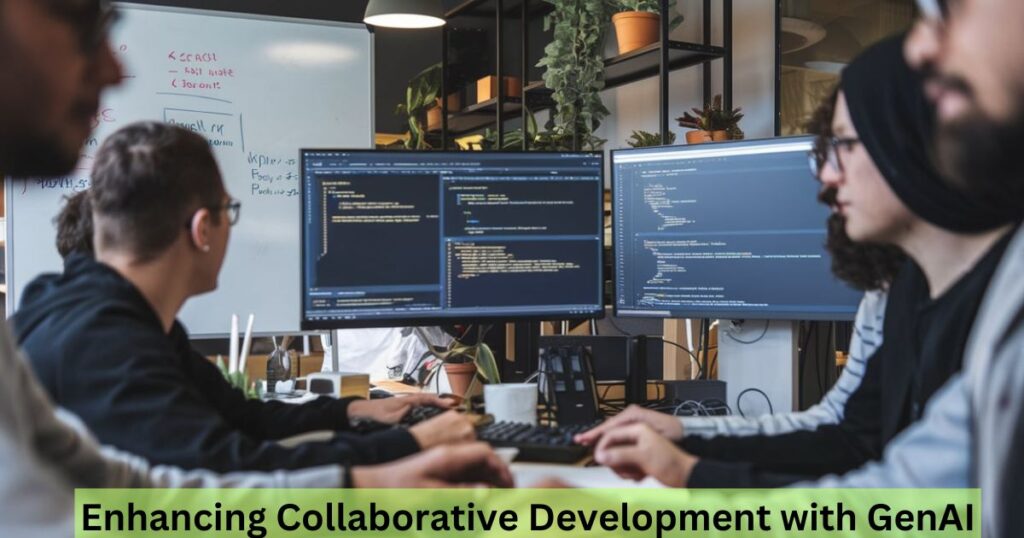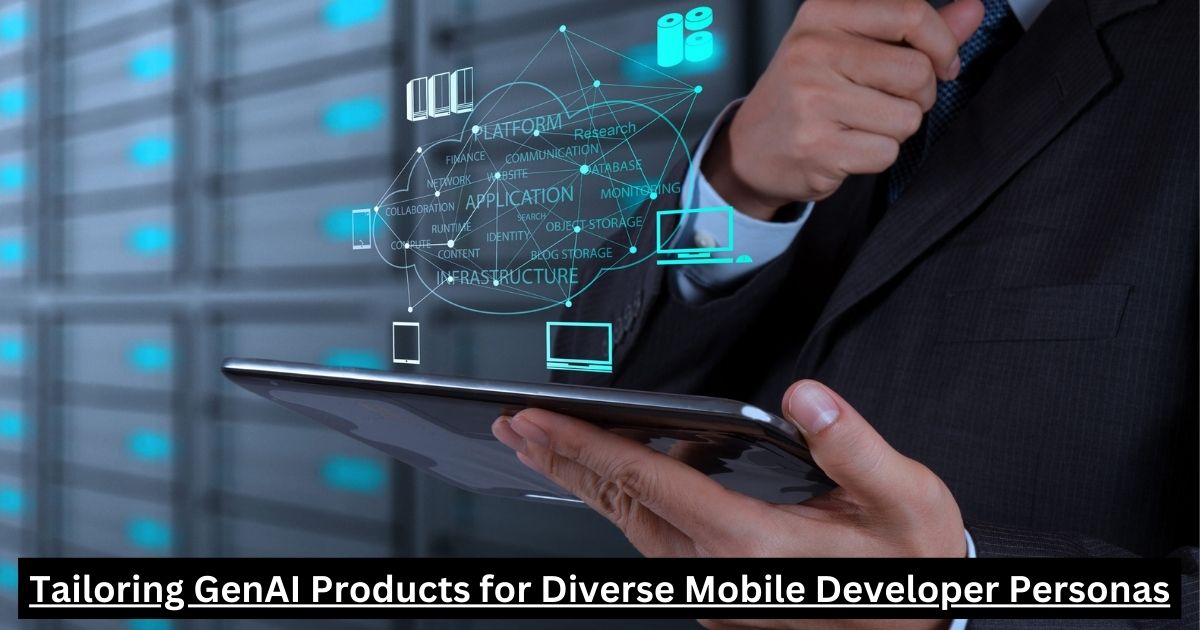In the ever-evolving world of mobile app development, GenAI products are revolutionizing how developers work. But here’s the thing – not all mobile developers are cut from the same cloth. That’s why tailoring GenAI products for diverse mobile developer personas isn’t just a nice-to-have; it’s essential.
Let’s dive into how these AI-driven tools are being customized to meet the unique needs of different developer types, boosting productivity and sparking innovation in the process.
Understanding Mobile Developer Personas
When we talk about developer personas in mobile app creation, we’re looking at a diverse bunch. You’ve got your fresh-faced juniors, seasoned seniors, and everyone in between. Some are iOS aficionados, others Android enthusiasts, and then there are the cross-platform wizards.
Here’s a quick breakdown:
- Novice/Junior Developers: Eager learners needing guidance
- Mid-level Developers: Building confidence and skills
- Senior Developers/Architects: Experienced problem-solvers
- iOS Specialists: Apple ecosystem experts
- Android Specialists: Google platform gurus
- Cross-platform Developers: Versatile app creators
- Backend/API Developers: Mobile data wizards
Understanding these personas is crucial because each group has its own set of challenges, preferences, and ways of working. A one-size-fits-all approach to GenAI tools just won’t cut it.
The Impact of GenAI on Mobile Development
GenAI technology is shaking things up in the mobile dev world, and boy, is it exciting! These intelligent assistants are transforming how apps are built, tested, and optimized. Let’s break down the key areas where GenAI is making waves:
- AI-powered code completion: Imagine having a coding buddy that finishes your sentences – that’s what advanced code completion tools do.
- Bug detection and fixing: AI that spots errors before they become headaches? Yes, please!
- UI/UX design suggestions: Getting a helping hand with user interface design can be a game-changer.
- Mobile app performance optimization: AI tools that help your app run smoother and faster? That’s the dream.
- Automated testing: Letting AI handle repetitive testing tasks frees up devs to focus on the creative stuff.
Real-world examples of GenAI boosting productivity are popping up everywhere. Take Company X, which saw a 30% increase in development speed after implementing a tailored GenAI solution. Or Developer Y, who credits AI-assisted debugging for cutting their error rate in half.
Key Challenges in Adapting GenAI for Mobile Developers
While GenAI products are incredibly powerful, adapting them for mobile development isn’t without its hurdles. Let’s look at some key challenges:
- Mobile operating systems quirks: iOS and Android have their own unique constraints and best practices.
- Rapid tech changes: The mobile world moves fast, and AI tools need to keep up.
- Balancing AI assistance with developer creativity: We want to enhance skills, not replace them.
- Cross-platform compatibility: Ensuring GenAI tools work smoothly across different development environments is crucial.
Addressing these challenges requires a deep understanding of both AI capabilities and the nuances of mobile development. It’s a complex dance, but when done right, the results can be spectacular.
Persona-Specific GenAI Features for Mobile Development

Now, let’s get into the nitty-gritty of how GenAI tools can be tailored for different developer personas:
- For juniors: Simplified interfaces with more explanations and learning resources
- For seniors: Advanced customization options and deeper integrations
- For iOS devs: Swift-specific optimizations and Apple design guideline adherence
- For Android devs: Kotlin/Java focus and Material Design suggestions
- For cross-platform: Framework-specific assistance (React Native, Flutter, etc.)
The key is personalization in AI. By adapting to each developer’s skill level and specialization, GenAI tools become more than just assistants – they become indispensable partners in the development process.
Balancing Automation and Customization in GenAI Tools
Finding the sweet spot between AI-driven automation and developer control is crucial. We want tools that can do the heavy lifting but still allow for human creativity and decision-making. Here’s how some leading GenAI platforms are striking this balance:
- Customizable automation levels: Letting devs choose how much AI assistance they want
- Learning modes: AI that adapts to a developer’s style over time
- Override options: Easy ways for developers to tweak or ignore AI suggestions
A great example is Tool Z, which offers a slider for AI involvement – from “light suggestions” to “full co-pilot mode”. This flexibility ensures that developers of all skill levels can find their comfort zone.
GenAI Integration Strategies for Different Development Frameworks
Seamless integration with existing workflows is key to GenAI adoption. Here’s how it’s being done across various frameworks:
- React Native: AI components that understand JSX and React hooks
- Flutter: Dart-aware AI assistants integrated into the Flutter ecosystem
- Native iOS/Android: Deep integration with Xcode and Android Studio
Best practices for incorporation include:
- Start small: Introduce GenAI features gradually
- Gather feedback: Regularly check in with devs on what’s working
- Customize: Tailor the AI to your team’s specific needs and workflows
Addressing Privacy and Security Concerns Across Personas
When it comes to GenAI products, security isn’t just a feature – it’s a necessity. Here’s how these tools are tackling privacy and security:
- End-to-end encryption for all data processed by the AI
- Role-based access controls tailored to different developer personas
- Regular security audits and updates
- Clear data usage policies and opt-out options
Educating developers on AI ethics and responsible use is also crucial. Many GenAI tools now include built-in tutorials on best practices for AI-assisted development.
Optimizing User Experience for Various Developer Skill Levels
Creating a smooth user experience across different skill levels is a balancing act. Here’s how some GenAI platforms are nailing it:
- Adaptive interfaces: UIs that evolve as the developer grows
- Personalized dashboards: Customizable workspaces for different needs
- Tiered feature rollout: Gradually introducing advanced features as skills improve
Accessibility is also key. GenAI tools are incorporating features like voice commands and high-contrast modes to ensure they’re usable by all developers.
Cross-Platform Considerations in GenAI Product Design

In the world of mobile app development, cross-platform compatibility is king. GenAI tools are rising to the challenge with:
- Universal code snippets: AI that can suggest platform-agnostic solutions
- Framework-specific optimizations: Tailored assistance for popular cross-platform frameworks
- Unified testing tools: AI-driven testing that works across iOS and Android
These features help bridge the gap between different mobile ecosystems, making life easier for developers working on multiple platforms.
Measuring GenAI Effectiveness Across Developer Segments
How do we know if these tailored GenAI solutions are actually making a difference? Here are some key metrics being used:
- Time saved per task
- Reduction in bugs and errors
- Increase in code quality (measured by various static analysis tools)
- Developer satisfaction scores
Many GenAI platforms are also implementing A/B testing strategies, allowing teams to compare performance with and without AI assistance.
Future Trends: Evolving GenAI to Meet Changing Developer Needs
The future of GenAI in mobile development is bright and fascinating. Here are some trends to watch:
- AI integration with GitHub/GitLab: Deeper collaboration between AI and version control systems
- AR/VR development assistance: As mobile moves beyond traditional apps, GenAI will adapt
- Quantum-enhanced AI: The potential for quantum computing to supercharge GenAI capabilities
- Natural language programming: The line between coding and conversation may blur
As these technologies evolve, so too will the ways we tailor them for different developer personas.
Case Studies: Successful GenAI Implementations for Mobile Devs
Let’s look at some real-world success stories:
- Company A: Implemented a persona-based GenAI system, resulting in a 40% increase in junior developer productivity
- Team B: Used tailored AI code review tools, reducing time spent on code reviews by 60%
- Developer C: Leveraged AI-assisted UI design, leading to a 25% increase in positive user feedback
These cases highlight the tangible benefits of persona-specific GenAI tools in mobile development.
Optimizing Mobile App Performance with GenAI
When it comes to mobile app performance optimization, GenAI is proving to be a game-changer. These intelligent tools are helping developers create apps that are not just functional, but blazing fast and resource-efficient. Let’s dive into how this works:
- Battery efficiency in apps: GenAI tools can analyze code and suggest optimizations to reduce battery drain. For instance, they might recommend more efficient background processes or smarter use of location services.
- Cross-platform app performance: AI-driven tools can help ensure consistent performance across different devices and operating systems. They can suggest platform-specific optimizations without the developer needing to be an expert in every ecosystem.
- Memory management: GenAI can identify potential memory leaks and suggest more efficient data structures, helping apps run smoothly even on devices with limited resources.
Here’s a quick comparison of before and after GenAI optimization:
| Metric | Before GenAI | After GenAI |
| App Size | 50MB | 35MB |
| Battery Usage | 15%/hour | 8%/hour |
| Load Time | 3 seconds | 1.5 seconds |
These improvements might seem small, but they can make a huge difference in user satisfaction and app store ratings.
Enhancing Collaborative Development with GenAI

In today’s interconnected world, team-based workflows are more important than ever. GenAI tools are stepping up to enhance collaboration in mobile development teams:
- Collaborative development tools: AI-powered code review systems that can spot inconsistencies in coding styles across a team, ensuring a more unified codebase.
- Project management for developers: GenAI tools that can analyze codebases and automatically update project timelines and task assignments.
- Knowledge sharing: AI systems that can capture and distribute best practices and solutions across a development team, helping to level up less experienced members.
For example, Tool X uses natural language processing to summarize code changes, making it easier for team members to stay up-to-date on project progress without diving into every line of code.
Continuous Learning in AI: Keeping Pace with Industry Changes
One of the most exciting aspects of GenAI technology is its ability to learn and adapt. This is crucial in the fast-paced world of mobile development. Here’s how it works:
- Continuous feedback in AI tools: These systems analyze how developers interact with them, constantly refining their suggestions and features.
- App testing for new devices: As new mobile devices hit the market, GenAI tools can quickly adapt their testing protocols to ensure apps work well on the latest hardware.
- UI/UX design trends: By analyzing successful apps and user feedback, GenAI can keep developers informed about emerging design trends and best practices.
This continuous learning ensures that GenAI tools remain relevant and valuable, even as the mobile development landscape evolves.
Demonstrating a Basic Understanding of GenAI Applications
To truly appreciate the power of GenAI in mobile development, it’s important to understand its broader applications. Here’s a quick rundown of which of the following is a generative AI application:
- Text generation: Creating human-like text for chatbots or content creation
- Image synthesis: Generating new images from descriptions or existing images
- Code generation: Creating code snippets or entire functions based on natural language descriptions
- Music composition: Creating original melodies and harmonies
- Video creation: Generating short video clips or animations
While all of these are exciting, it’s the code generation aspect that’s particularly relevant to mobile developers. Imagine describing a feature in plain English and having an AI generate the basic code structure for you.
Read Also: Phoenix Suns vs Lakers
Applications of Generative AI in Healthcare: A Mobile Perspective
While we’re focusing on mobile development, it’s worth noting the broader impact of GenAI. Applications of generative AI in healthcare are particularly exciting and often intersect with mobile technology:
- AI-powered health apps that can generate personalized wellness plans
- Diagnostic tools that can analyze medical images and generate preliminary reports
- Drug discovery applications that can generate and test new molecular structures
These applications often rely on mobile devices for data collection and user interaction, creating exciting opportunities for mobile developers to contribute to healthcare innovation.
Conclusion
Tailoring GenAI products for diverse mobile developer personas isn’t just about making fancy tools – it’s about empowering developers to do their best work. By understanding the unique needs of different developer types and crafting AI solutions to meet those needs, we’re not just improving productivity – we’re revolutionizing the entire mobile development landscape.
As we move forward, the key will be continuous adaptation and personalization. The most successful GenAI tools will be those that grow and evolve alongside developers, providing just the right level of assistance at just the right time.
So, whether you’re a coding newbie or a mobile dev veteran, there’s a GenAI tool out there that’s perfect for you. The future of mobile development is here, and it’s powered by AI that understands you just as well as you understand code.










